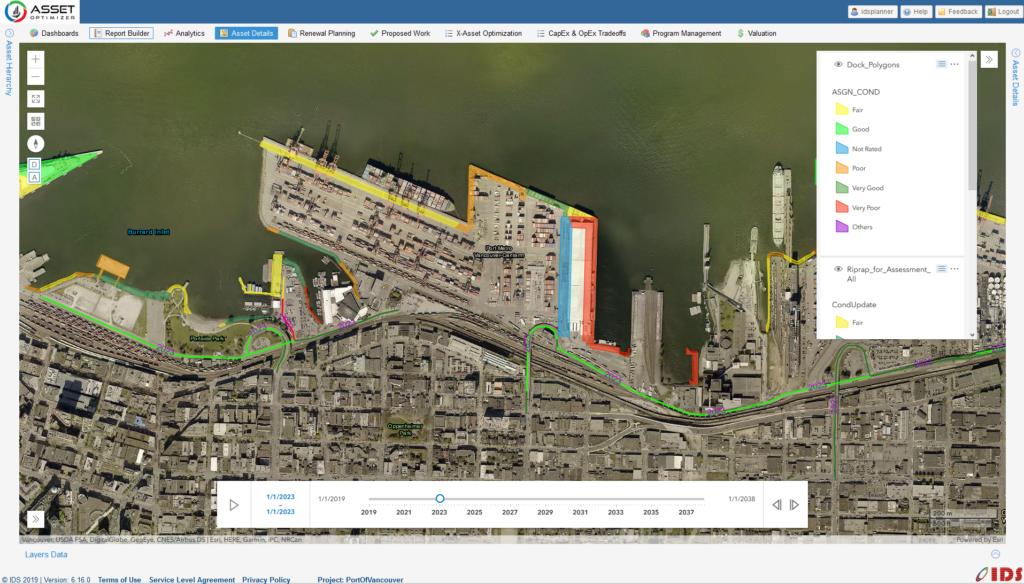Overview
Client: Vancouver Fraser Port Authority
Location: Vancouver, British Columbia, Canada
Project: Development of Optimal 20-Year Risk-Based Asset Management Plans
IDS Asset Optimizer software was used to enable the Vancouver Port Authority to develop optimized risk-based 20-year capital plans for the Port’s critical infrastructure assets, including pavement, dock structures, and shoreline protection assets.
About the Port of Vancouver
Located in the southwest coast of British Columbia, the port consists of 16,000 hectares of water, more than 1,000 hectares of land, and about 350 kilometres of shorelines. The port manages 14 different asset classes.

Challenge
The Port of Vancouver is Canada’s largest port, and the third largest in North America in terms of annual tonnes of cargo. The Port manages a significant and diverse portfolio of infrastructure assets including roads, overpasses, dock structures, shoreline protection, utilities, buildings, among others. Since 2009, the Port has been taking several initiatives to implement a strategic and systematic asset management program to ensure sustainability of the Port’s asset portfolio. To ensure efficient implementation of asset management best practices, in line with ISO 55000 standards, the Port needed to adopt an innovative decision support tool that can support the prioritization and optimal programming of capital projects across various infrastructure asset classes.
Solution
IDS Asset OptimizerTM GIS-centered cloud-based software was used to perform in-depth data analysis and develop deterioration and risk models for the Port’s pavement, docks, and shoreline protection assets. Optimal 20-year asset rehabilitation and replacement plans were developed under a number of scenarios to provide a comprehensive understanding of the impact of various funding levels on asset performance and risk, and also to evaluate budget requirements to achieve desired performance and risk targets. For each planning scenario, the software generated optimal annual project lists that defined which asset to rehabilitate or replace and which rehabilitation or replacement method to use, subject to defined constraints on condition, risk, and budget.
Detailed trade-off analysis of various scenarios helped to quantify relationships between funding levels and system-wide condition and risk metrics. Analysis of various scenarios also helped to explicitly define performance objectives and constraints and accurately assess funding needs and consequences of various funding levels. These results would ultimately support the development of objective and optimized long-range asset management programs, and enable the justification of planning decisions using quantitative measures and consistent procedures that are aligned with the Port’s policies and objectives.

